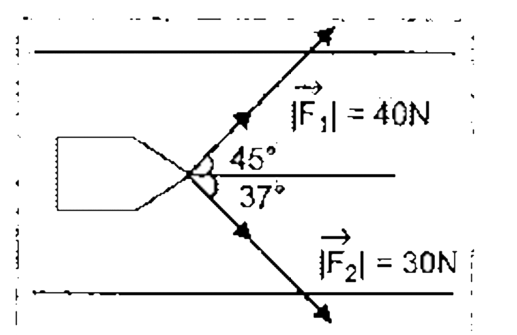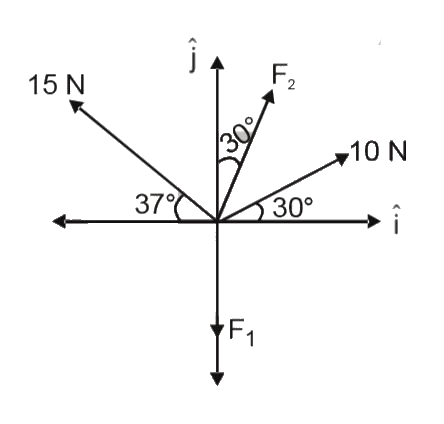Forces →F1,→F2 and →F3 act on the structure of Fig. shown in an overhead view. We wish to put the structure in equilibrium by applying a fourth force, at a point such as P. The fourth force has vec components →Fh and →Fv . We are given that a=2.0m,b=3.0m,c=1.0m,F1=30N,F2=10N, and F3=5.0N. Find (a) Fh (b) Fv and (c) d.

(a) 5.0 N, (b) 40 N, (c) 1.0 m
Topper's Solved these Questions
- RIGID BODY DYNAMICS-IIBOOK - RESNICK AND HALLIDAYCHAPTER - RIGID BODY DYNAMICS-IIEXERCISE - PRACTICE QUESTIONS
28 Videos
- RIGID BODY DYNAMICS-IIBOOK - RESNICK AND HALLIDAYCHAPTER - RIGID BODY DYNAMICS-IIEXERCISE - PRACTICE QUESTIONS (More than One Option Correct Type)
2 Videos
- RIGID BODY DYNAMICS-IIBOOK - RESNICK AND HALLIDAYCHAPTER - RIGID BODY DYNAMICS-IIEXERCISE - CHECKPOINT
4 Videos
- RIGID BODY DYNAMICS - IBOOK - RESNICK AND HALLIDAYCHAPTER - RIGID BODY DYNAMICS - IEXERCISE - PRACTICE QUESTIONS (INTEGER TYPE))
3 Videos
- TEMPERATURE, ZEROTH LAW OF THERMODYNAMICS AND THERMAL EXPANSION BOOK - RESNICK AND HALLIDAYCHAPTER - TEMPERATURE, ZEROTH LAW OF THERMODYNAMICS AND THERMAL EXPANSION EXERCISE - PRACTICE QUETIONS (Integer Type)
4 Videos
Similar Questions
Knowledge Check
Two forces →F1and→F2 are acting at right angles to each other, find their resultant ?
A√F21+F22B√F21−F22CF1+F2DF1−F2Three forces →F1,→F2 and →F3 are simultaneously acting on a particle of mass 'm' and keep it in equlibrium. If →F1 force is reversed in direction only, the acceleration of the particle will be.
A¯¯¯F1/mB2¯¯¯F1/mC−¯¯¯F1/mD−2¯¯¯F1/mThe resultant of the forces →F1=4ˆi−3ˆj and →F2=6ˆi+8ˆj is
A5√5B10ˆi−5ˆjC125D−2ˆi−3ˆj
The resultant of the forces →F1=4ˆi−3ˆj and →F2=6ˆi+8ˆj is
View Solution
A boat is tied to river bank with ropes as shown in figure. Force exterted by ropes on boat is shown in figure. What are x and y-components of →F1 and →F2 vectors?
View SolutionTwo forces →F1=2ˆi+2ˆjNand→F2=3ˆi+4ˆkN are acting on a particle
(a) Find the resultant force acting on particle
(b) (b) Find the angle between−→F1&−→F2
(c) Find the componant of force −→F1 along force −→F2.
View SolutionThree forces →F1=a(ˆi−ˆj+ˆk),→F2=2ˆi−3ˆj+4ˆk and →F3=8ˆi−7ˆj+6ˆk act simultaneously on a particle. If the particle is in equilibrium, the value of α is
View SolutionTwo force vectors →F1 and→F2 , each of magnitude 10 N act at a point at an angle of 60°. The magnitude of resultant force vector is
View Solution


